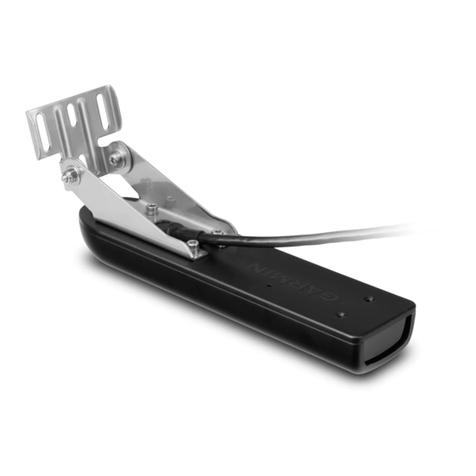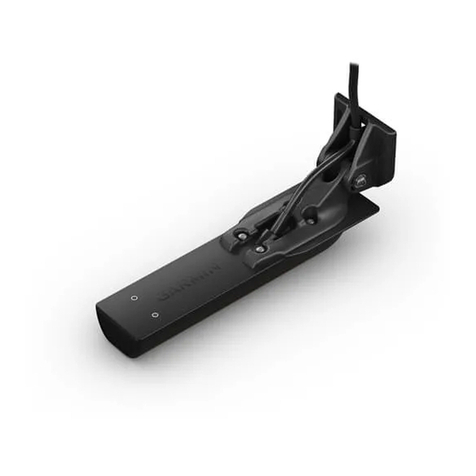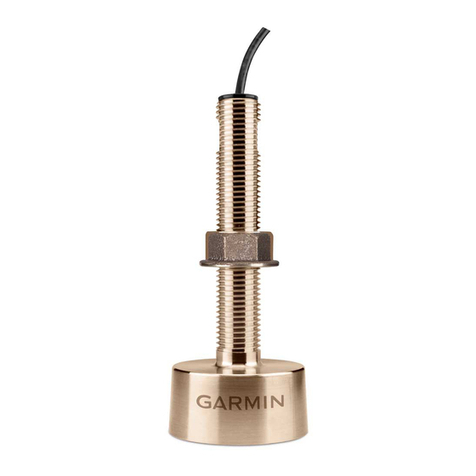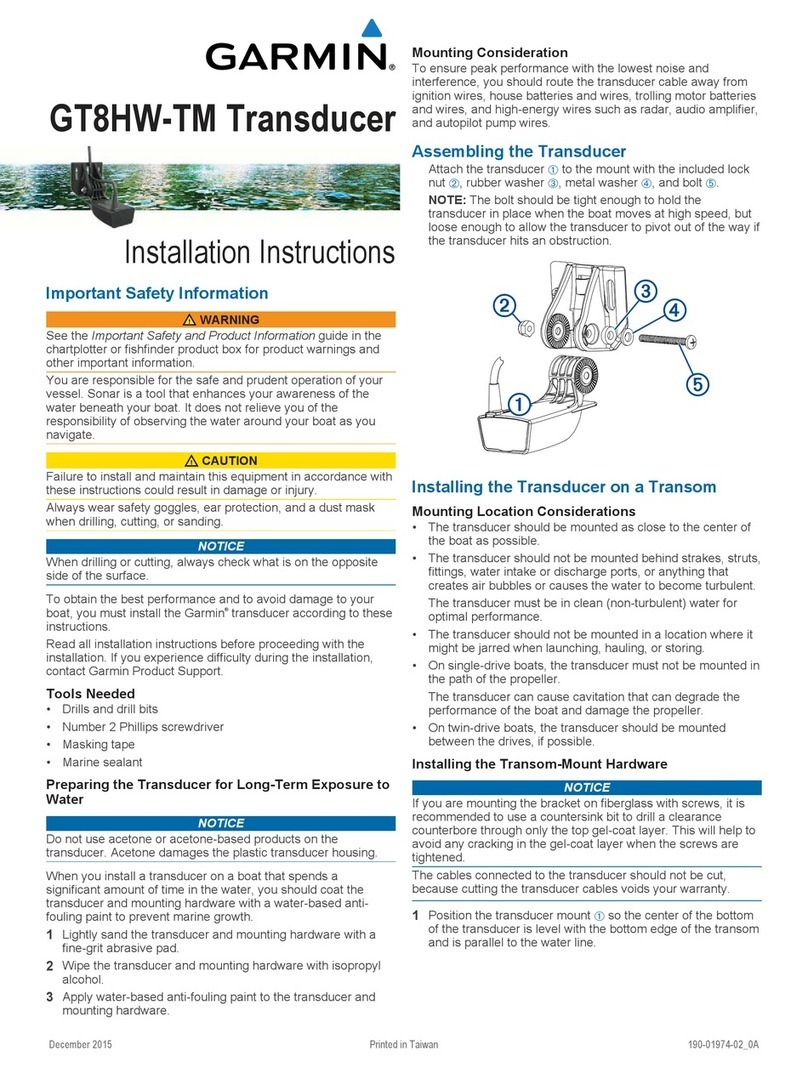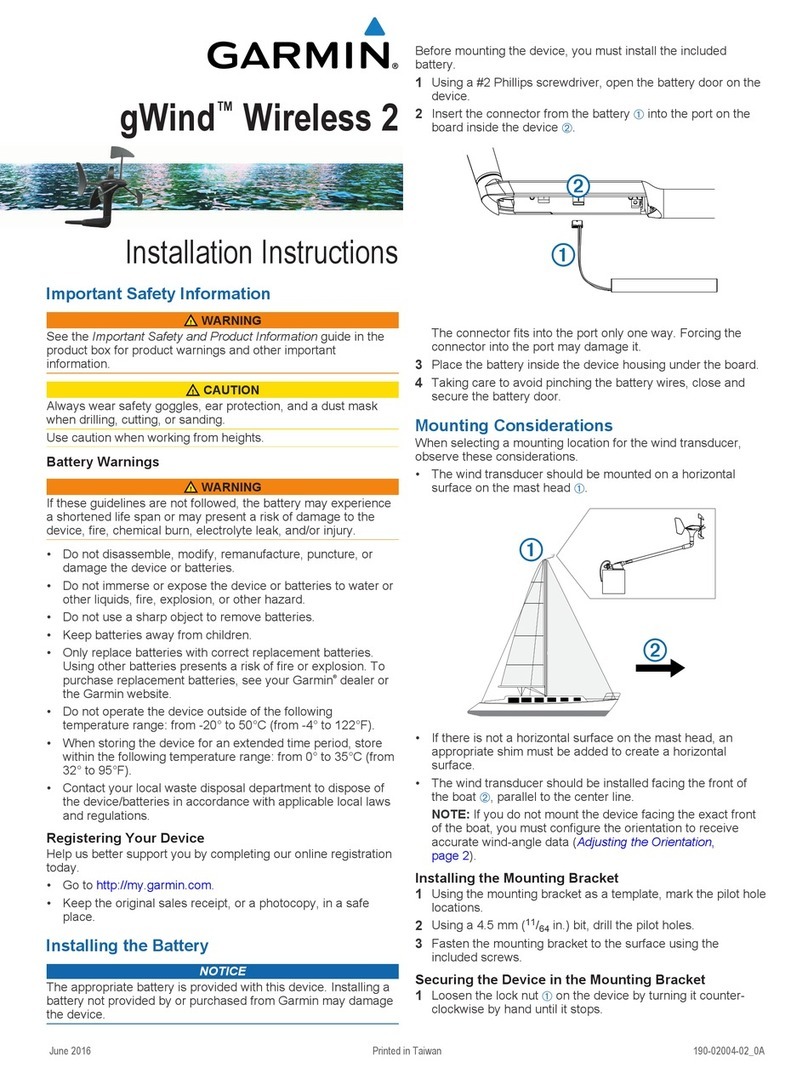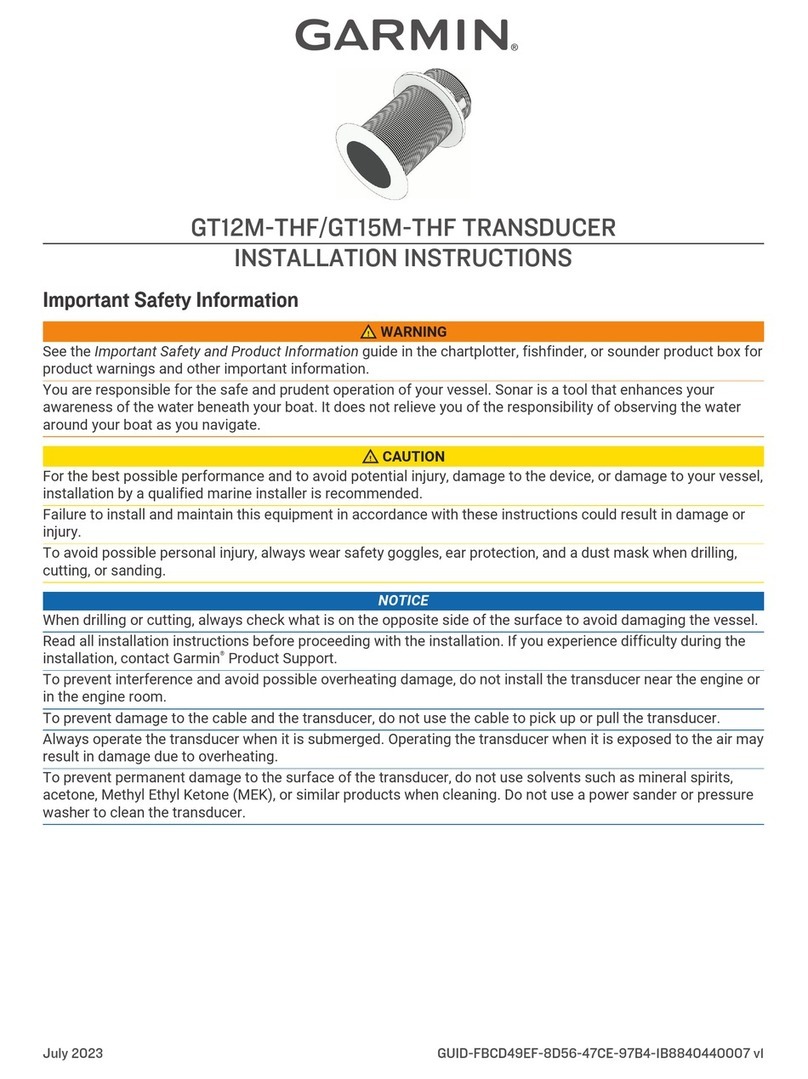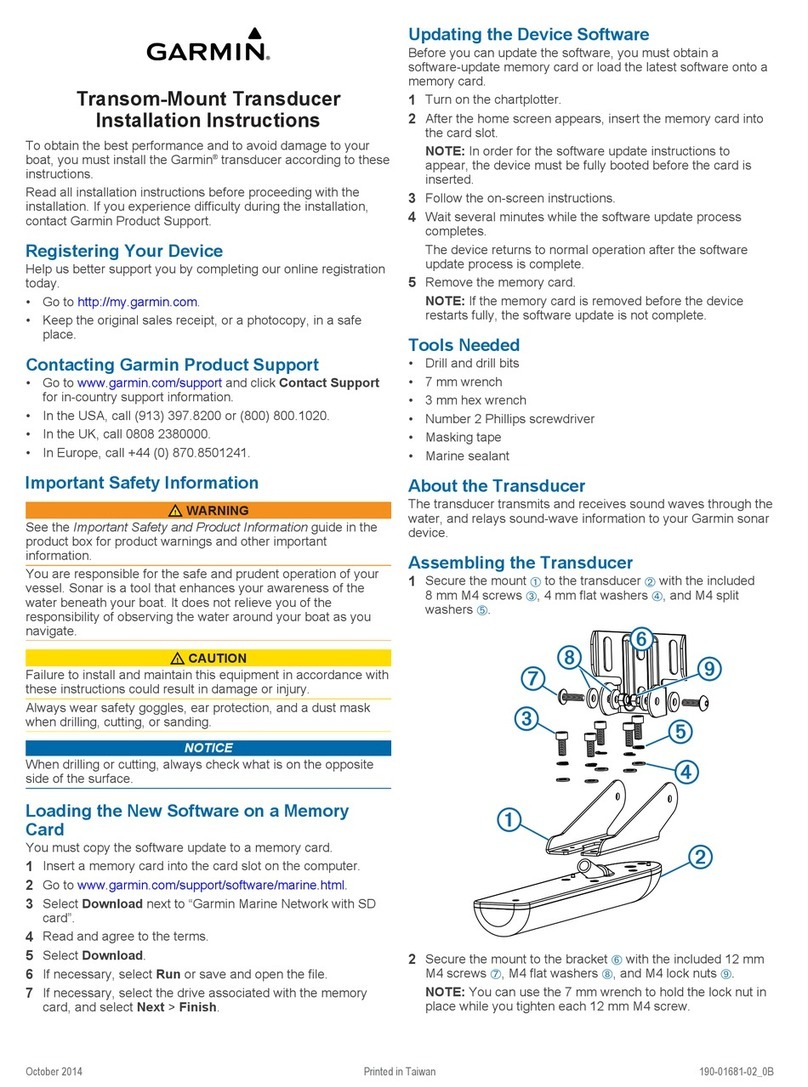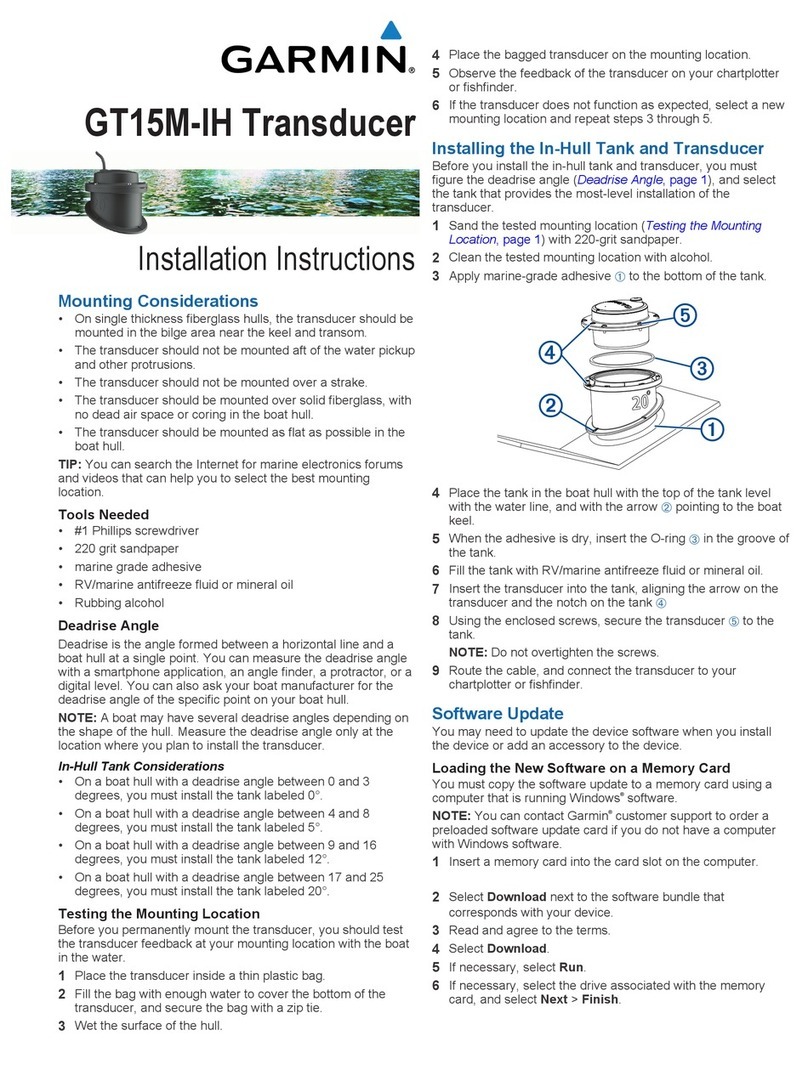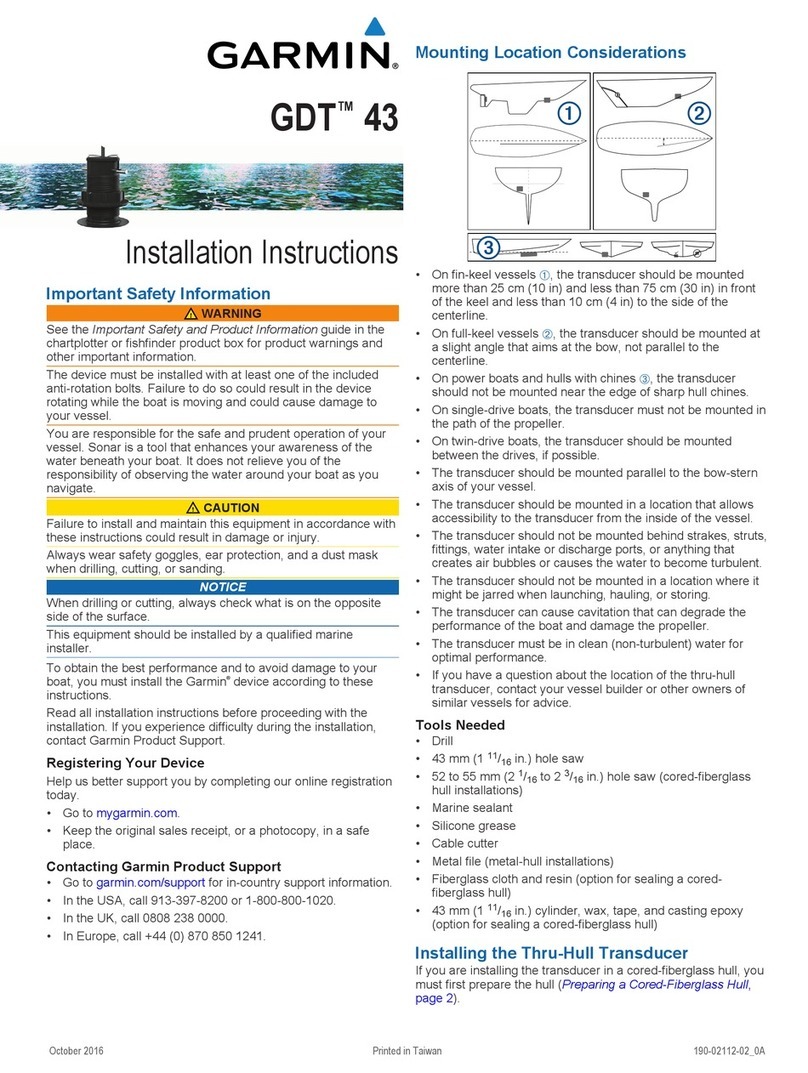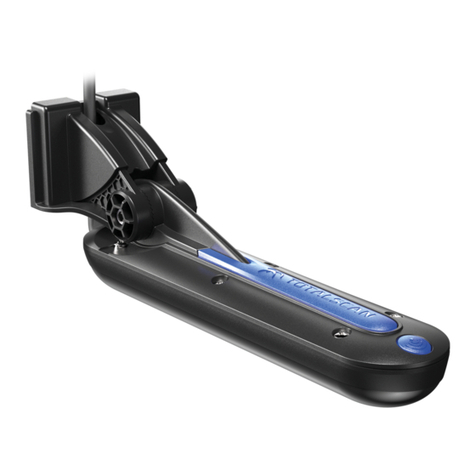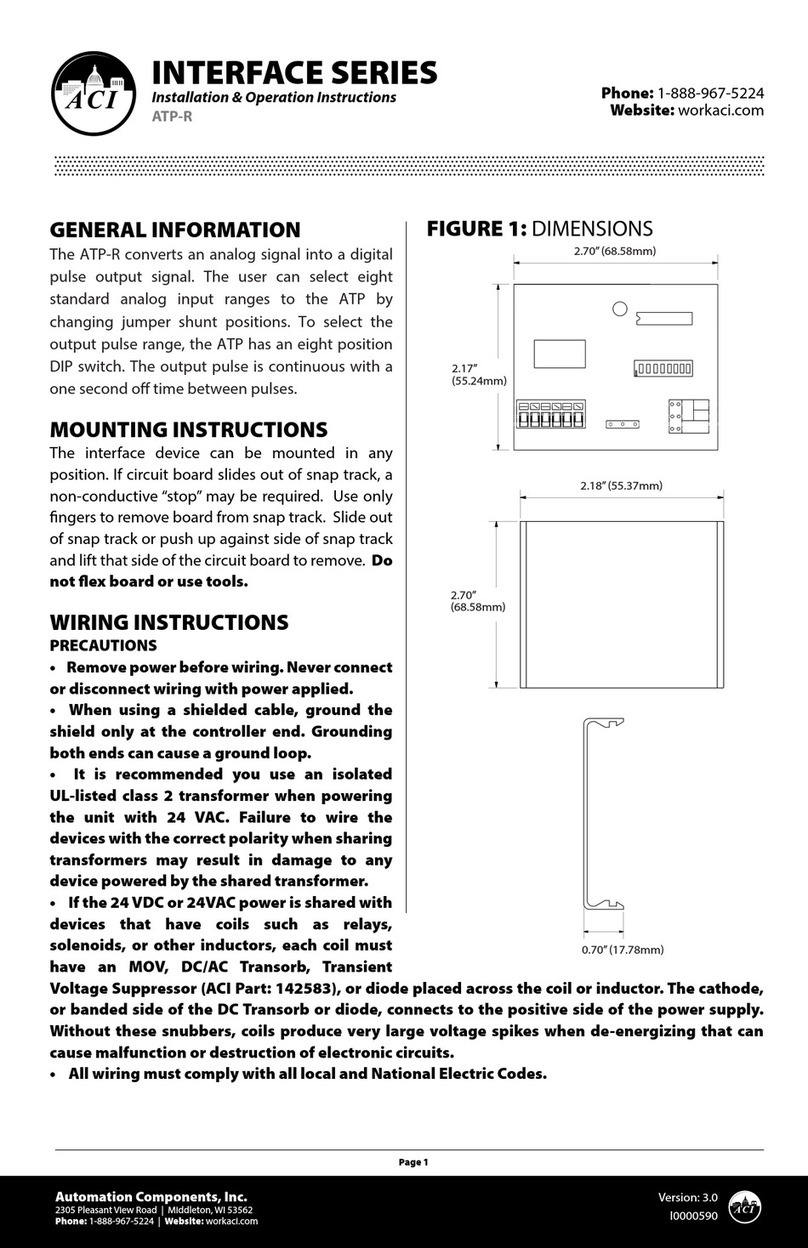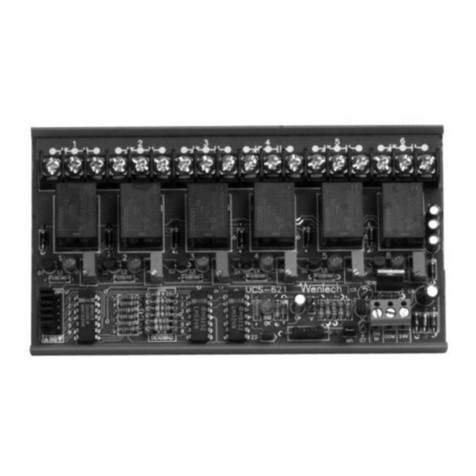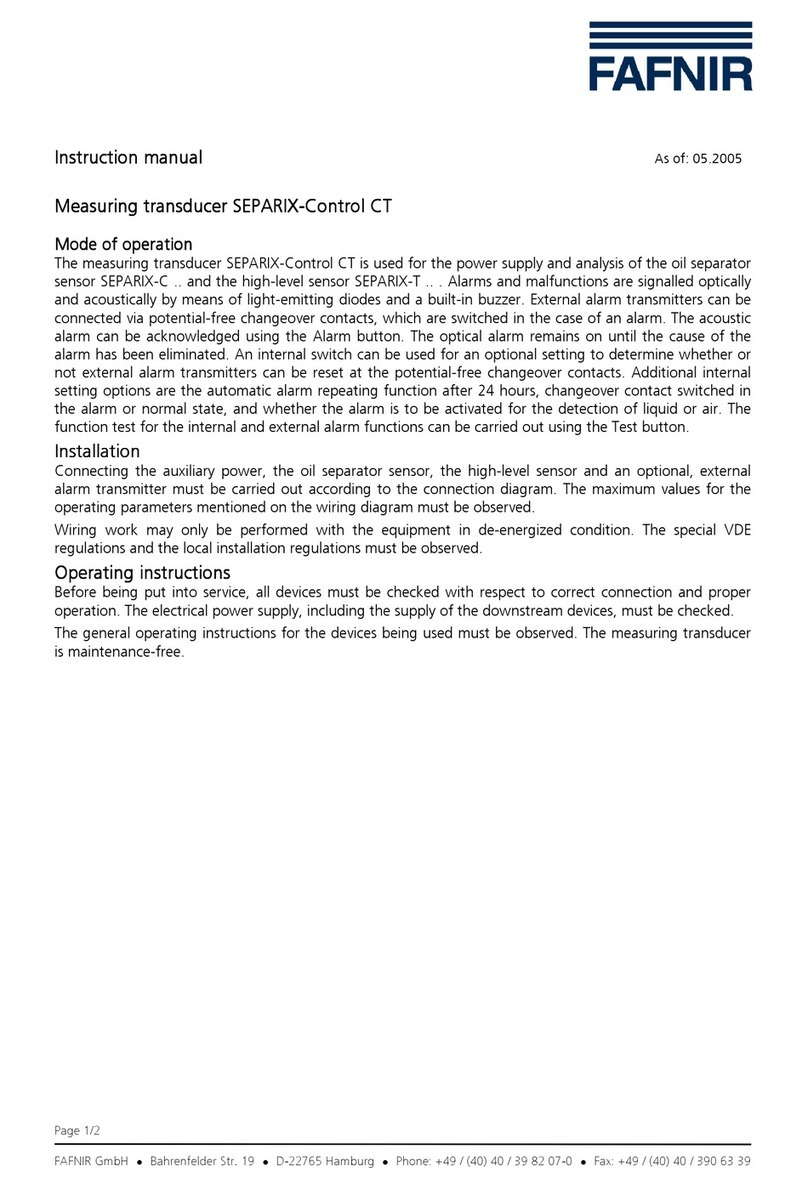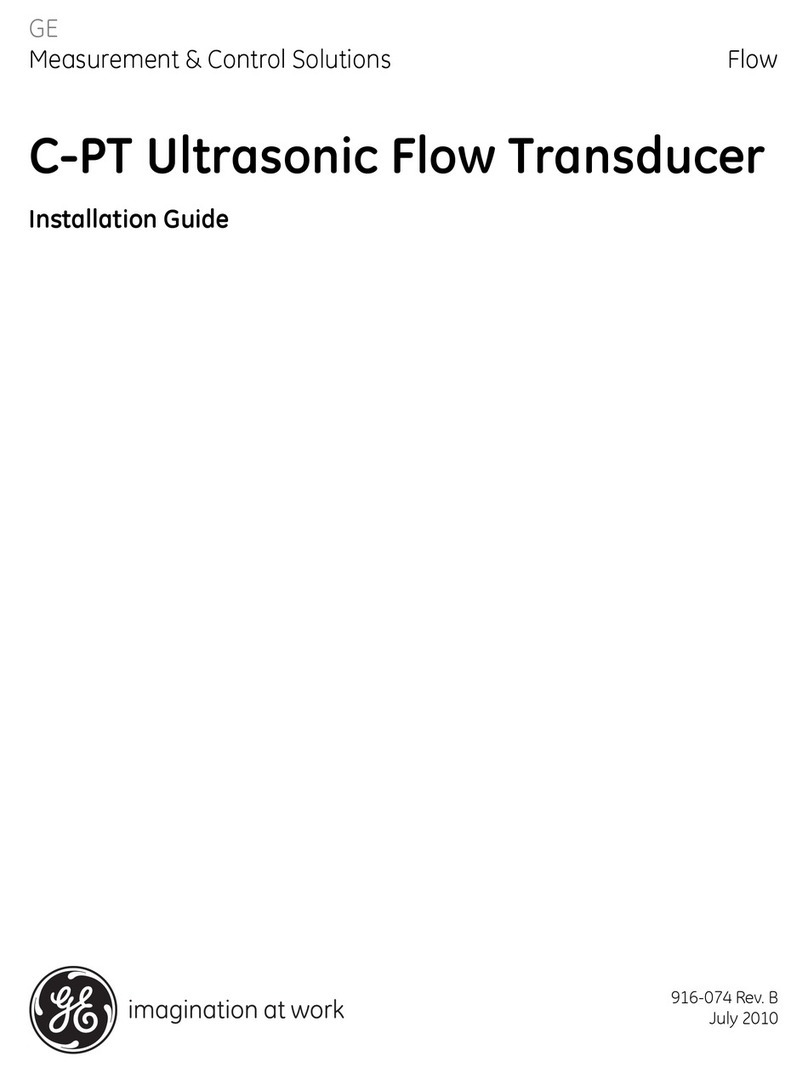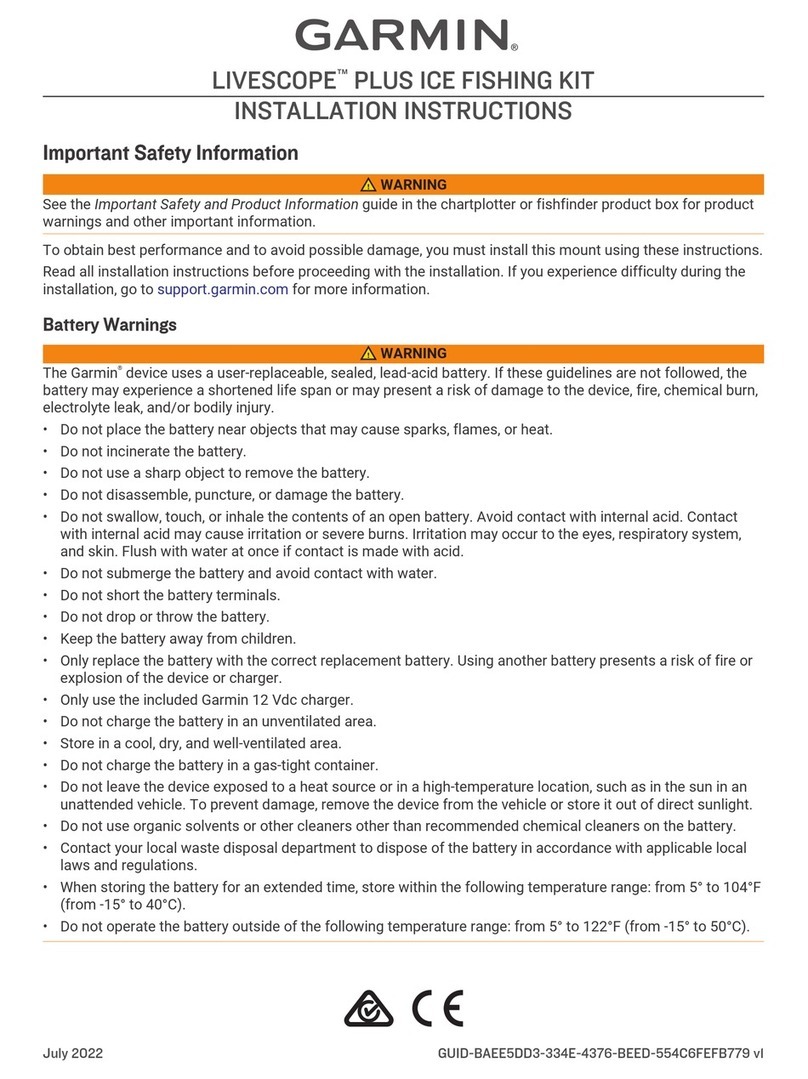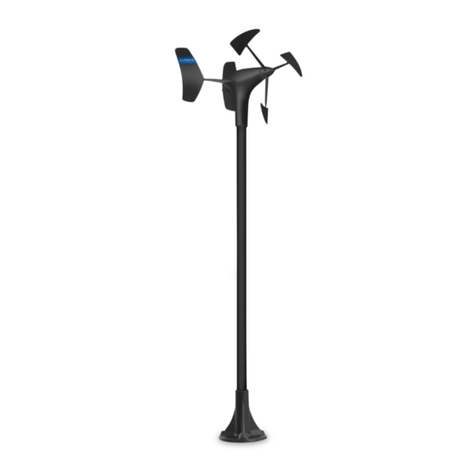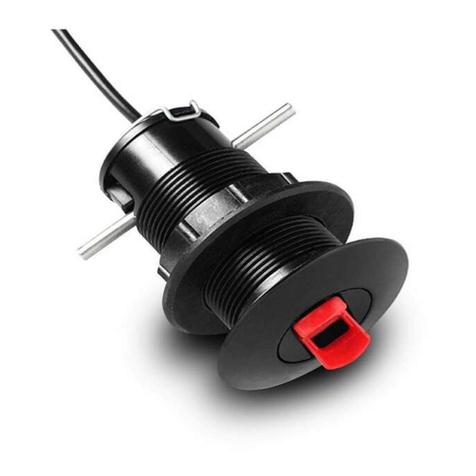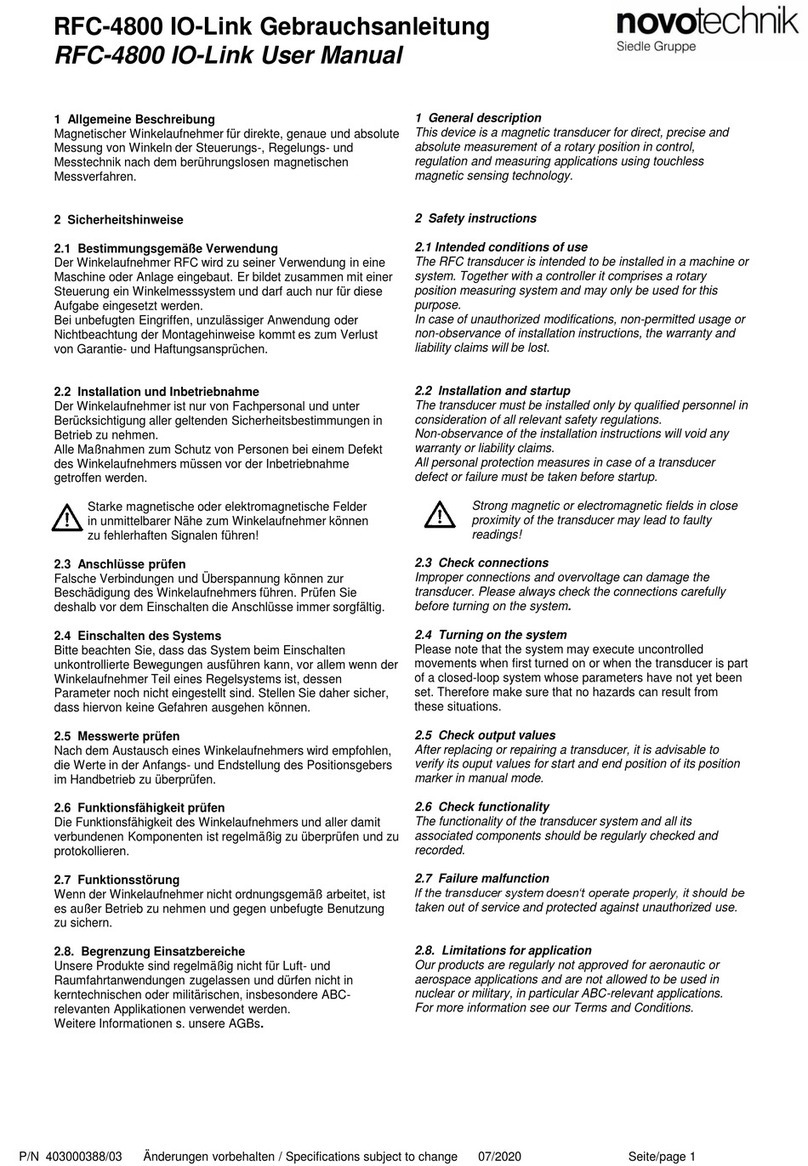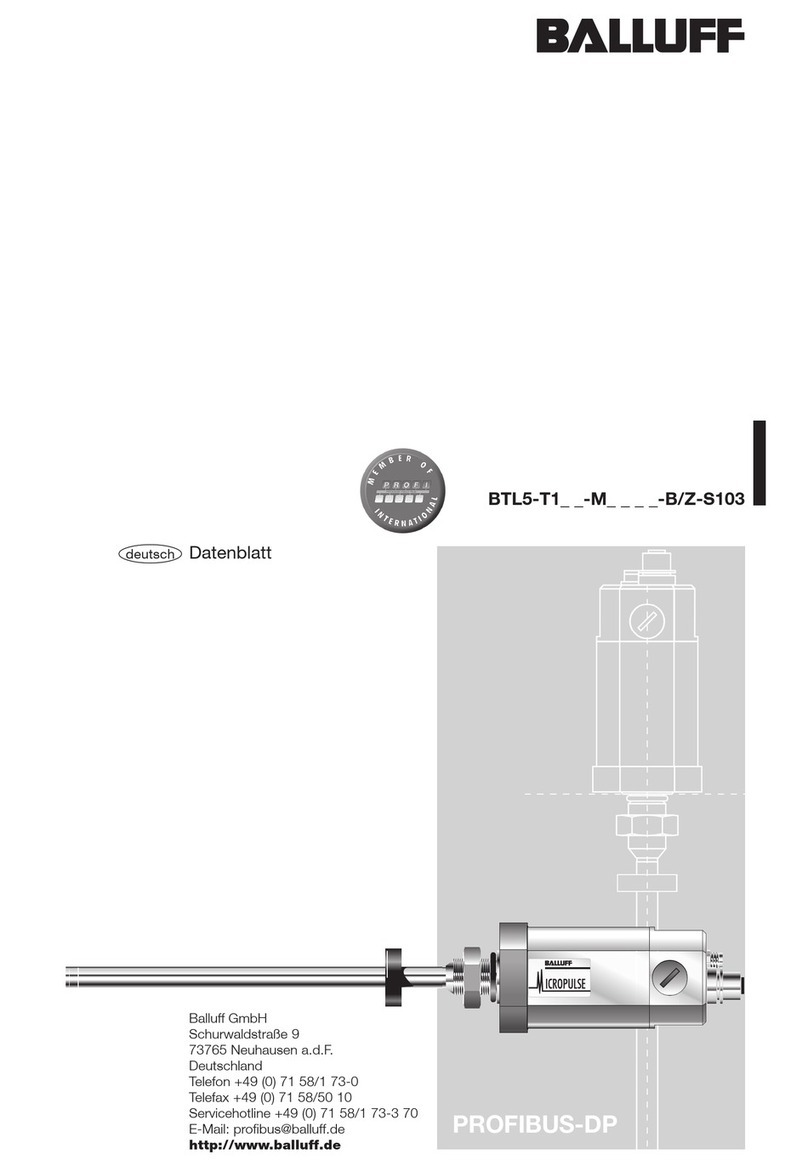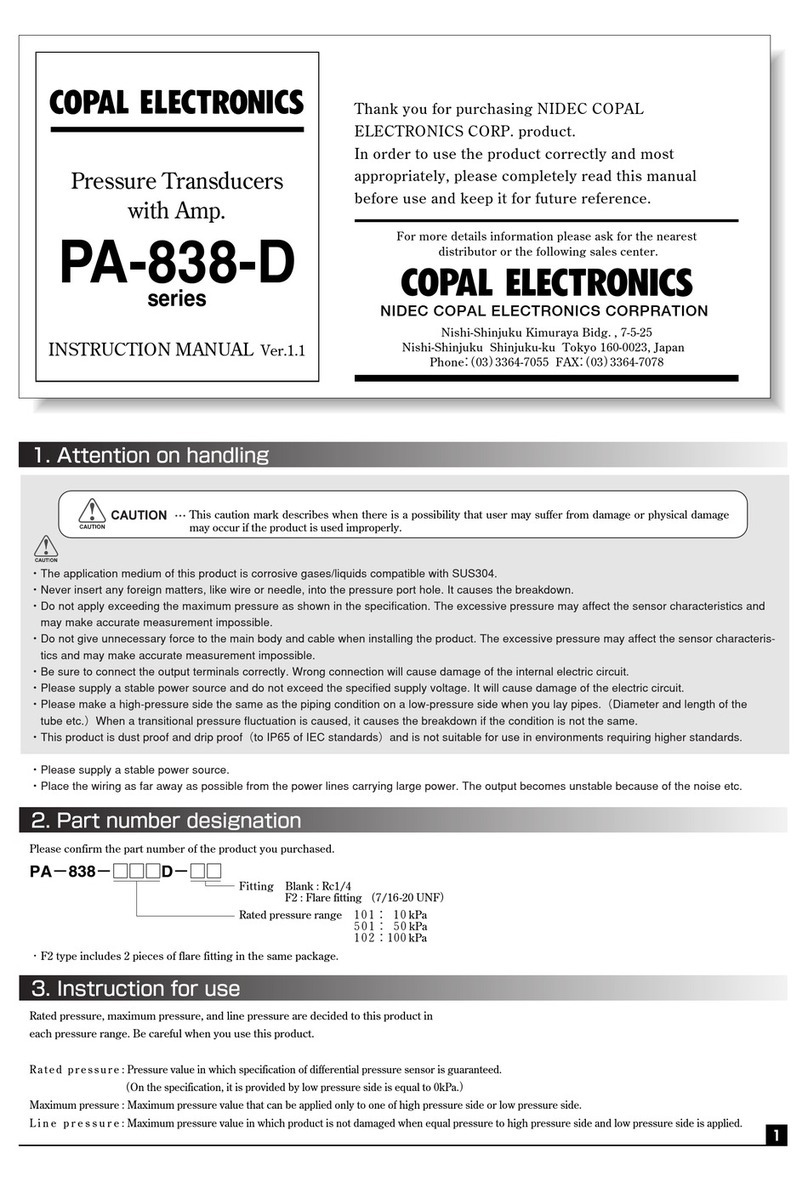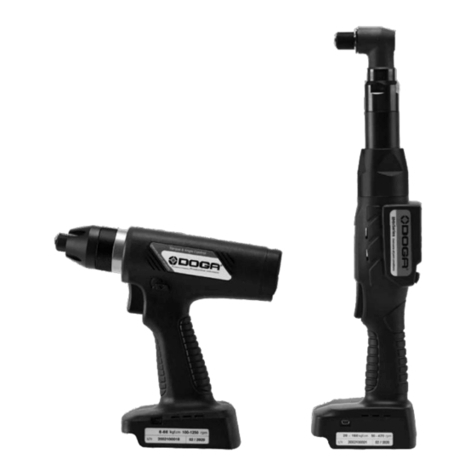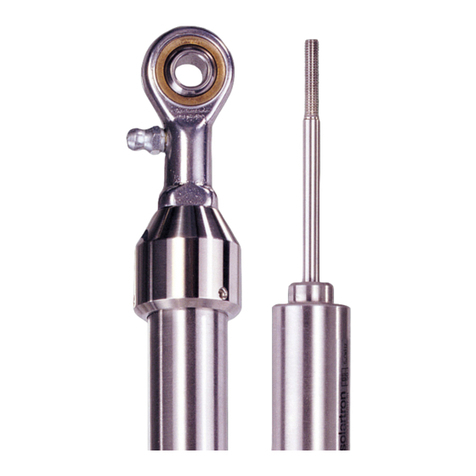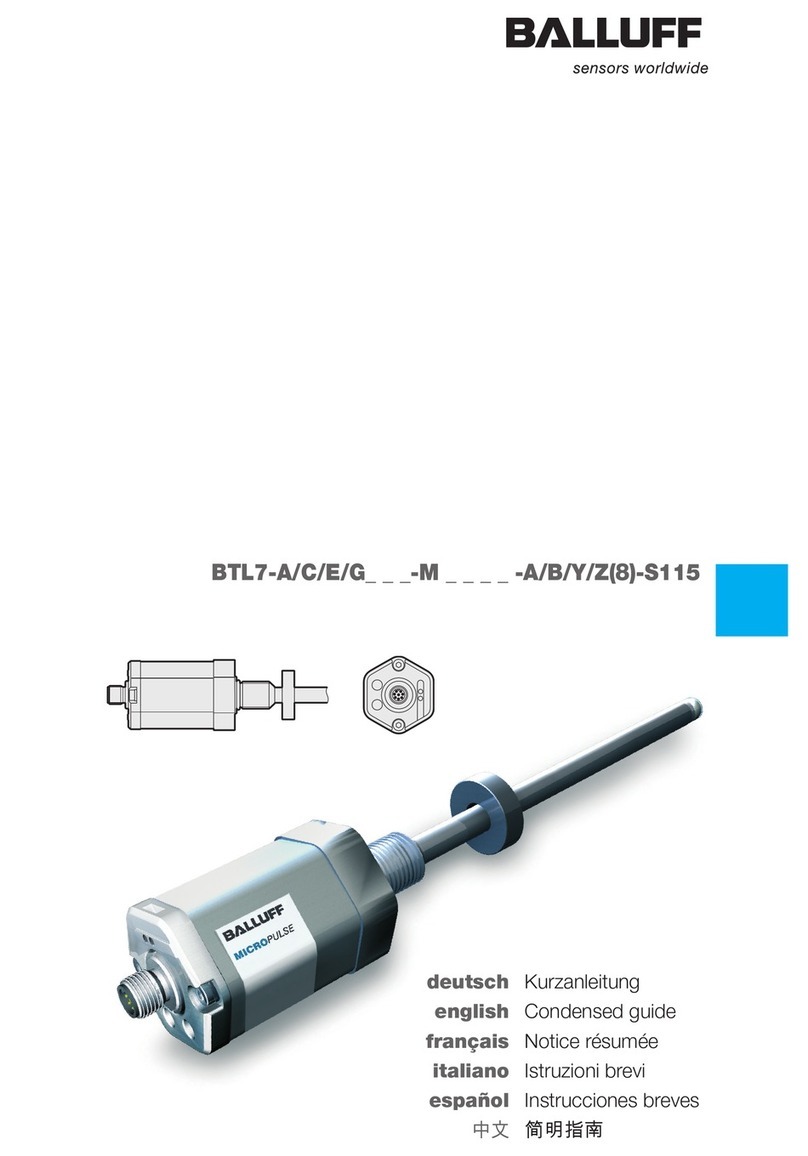
Item Description
ÀgWind™ device
ÁIncluded Nexus® mast cable with a field-installable connector
ÂGND 10
ÃNMEA 2000 network
Nexus Connection Considerations
If you change from a Nexus wind sensor to the gWind sensor,
you must move the mast cable from the wind port to the network
port on the Nexus server on pins 5, 6, 7, and 8. The network
server is NX2, and the classic server is BUS. See the Nexus
device manual for more information.
Installing the Nexus Field-Installable Connector
You must use the included field-installable connector to create
the appropriate cable length for your installation.
1Connect the finished end of the included bulk cable to the
wind transducer on the mast.
2Route the bare end of the cable to the location of the
GND 10.
3Leaving an appropriate amount of slack, cut the bare end of
the wire, remove the casing, and strip the individual wires.
4Disassemble the field-installable connector and place the
pressing screw À, pinch ring Á, seal Â, and sleeve à on the
cable Ä.
5Using the screws on the back of the connector Å, connect
each wire to the appropriate terminal.
Terminal Number Wire Color
ÊGreen
ËYellow
ÌBare wire
ÍWhite
6Screw the sleeve onto the connector.
7Slide the seal into the sleeve and slide the pinch ring over the
seal.
8Screw the pressing screw into the sleeve to complete the
assembly of the field-installable connector.
9Connect the field-installable connector to either NEXUS port
on the GND 10.
Configuring the Wind Transducer
Before you can configure the wind transducer, it must be
connected through a GND 10 to a NMEA 2000 network with a
Garmin marine instrument, such as a GMI™ 20. Refer to the
marine instrument owner's manual for more information on
configuring NMEA 2000 devices.
1On the marine instrument, go to the NMEA 2000 settings.
2Select the name of the device (GND 10) to configure.
Adjusting the Orientation
You should adjust this setting if the sensor does not face the
front of the boat, exactly parallel to the center line.
NOTE: The opening where the cable connects to the pole
indicates the front of the sensor.
1On the marine instrument, from the NMEA 2000 settings,
select the device name (GND 10).
2Select Wind Angle Offset.
3Estimate the angle, in degrees clockwise around the mast, by
which the sensor points away from the center of the front of
the boat:
• If the sensor is facing starboard, the angle should be
between 1 and 180 degrees.
• If the sensor is facing port, the angle should be between
181 and 360 degrees.
4Select the angle observed in step 3.
5Select Done.
Adjusting the Wind Angle Filter
You should adjust this setting to change the responsiveness of
the display to changes in the wind direction.
1On the marine instrument, from the NMEA 2000 settings,
select the device name (GND 10).
2Select Wind Angle Filter.
3Select an option:
• Select Off to turn off the filter and make the display the
most responsive to changes in the wind angle.
• Select On and adjust the value. Select a higher number to
increase the responsiveness of the display to changes in
the wind angle, or select a lower number to decrease the
responsiveness.
• Select Auto to automatically adjust the filter settings
based on wind conditions.
4Select Done.
Adjusting the Wind Speed Filter
You should adjust this setting to change the responsiveness of
the display to changes in the wind speed.
1On the marine instrument, from the NMEA 2000 settings,
select the device name (GND 10).
2Select Wind Speed Filter.
3Select an option:
• Select Off to turn off the filter and make the display the
most responsive to changes in the wind speed.
• Select On and adjust the value. Select a higher number to
increase the responsiveness of the display to changes in
the wind speed, or select a lower number to decrease the
responsiveness.
• Select Auto to automatically adjust the filter settings
based on wind conditions.
4Select Done.
Advanced Calibration
Advanced calibration tools are available for this device using a
connected PC running the NexusRace™ software. You can
download the software from www.garmin.com. You must
connect the PC to the GND 10. For more information, see the
GND 10 Installation Instructions.
Installation Instructions 3
